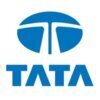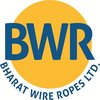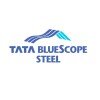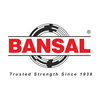Filter interviews by
Bansal Wire Industries Maintenance Electrician Interview Questions, Process, and Tips
Bansal Wire Industries Maintenance Electrician Interview Experiences
1 interview found
(13 Questions)
- Q1. What is power factor
- Ans.
Power factor is a measure of how effectively electrical power is being used in a circuit.
Power factor is the ratio of real power (in watts) to apparent power (in volt-amperes).
It indicates the efficiency of electrical equipment in converting electrical power into useful work.
A power factor of 1 means all the power is being used effectively, while a power factor less than 1 indicates wastage of power.
Inductive loads lik...
- Q2. What is different between MCB and dol Starter
- Ans.
MCB and DOL Starter are both electrical devices used for protection and control, but they have different applications.
MCB stands for Miniature Circuit Breaker, while DOL Starter stands for Direct-On-Line Starter.
MCB is used for protecting electrical circuits from overcurrents and short circuits, while DOL Starter is used for starting and stopping motors.
MCB is a compact device that can be manually reset after tripping,...
- Q3. What is ragistance
- Ans.
Resistance is the opposition to the flow of electric current in a circuit.
Resistance is measured in ohms (Ω).
It is caused by factors such as the material of the conductor, its length, and its cross-sectional area.
Resistance can be calculated using Ohm's Law: R = V/I, where R is resistance, V is voltage, and I is current.
Higher resistance leads to lower current flow.
Examples of resistance include the filament in a light
- Q4. What is timer and used
- Ans.
A timer is a device used to measure and control the passage of time.
Timers are commonly used in various electrical and electronic systems.
They can be used for scheduling and automating tasks.
Timers can be digital or analog, and may have different modes of operation such as countdown or interval timing.
Examples of timer applications include turning lights on and off at specific times, controlling the duration of industr...
- Q5. What is relay what do work
- Ans.
A relay is an electrical device that acts as a switch, using an electromagnet to control the flow of current in a circuit.
Relays are used to control high-power devices with low-power signals.
They consist of an electromagnet, a set of contacts, and a spring.
When the coil of the electromagnet is energized, it creates a magnetic field that attracts the contacts, closing the circuit.
Relays are commonly used in industrial a...
- Q6. What is vfd
- Ans.
VFD stands for Variable Frequency Drive.
VFD is an electronic device used to control the speed and torque of an electric motor.
It converts fixed frequency and voltage input into variable frequency and voltage output.
VFDs are commonly used in industrial applications to save energy and improve motor control.
They can be found in HVAC systems, pumps, fans, conveyors, and other motor-driven equipment.
VFDs allow for precise c...
- Q7. What is ac motor
- Ans.
An AC motor is an electric motor that operates on alternating current, converting electrical energy into mechanical energy.
AC motor stands for Alternating Current motor.
It is commonly used in various applications such as industrial machinery, appliances, and HVAC systems.
AC motors consist of a stator and a rotor.
The stator contains coils that produce a rotating magnetic field when supplied with AC current.
The rotor, wh...
- Q8. What is no nc push botton
- Ans.
A NO NC push button is a type of push button switch that has normally open (NO) and normally closed (NC) contacts.
NO NC push buttons are commonly used in electrical circuits to control the flow of current.
The NO contact is open when the button is not pressed and closes when the button is pressed.
The NC contact is closed when the button is not pressed and opens when the button is pressed.
These push buttons are often use...
- Q9. What is rectifier
- Ans.
A rectifier is an electrical device that converts alternating current (AC) to direct current (DC).
Rectifiers are commonly used in power supplies to convert AC voltage to DC voltage.
They are essential in many electronic devices, such as computers, televisions, and smartphones.
Rectifiers can be classified into different types, including half-wave rectifiers, full-wave rectifiers, and bridge rectifiers.
They typically cons...
- Q10. What is induction slipring motor
- Ans.
An induction slipring motor is a type of motor that uses slip rings to provide power to the rotor winding.
An induction slipring motor is also known as a wound rotor motor.
It consists of a stator, rotor, and slip rings.
The slip rings are connected to external resistors or other devices.
The slip rings allow external control of the rotor circuit.
This type of motor is commonly used in applications where high starting torqu...
- Q11. What is different between ocv and acv
- Ans.
OCV stands for Open Circuit Voltage and ACV stands for Alternating Current Voltage.
OCV is the voltage measured when there is no load connected to a circuit.
ACV is the voltage of an alternating current, which periodically changes direction.
OCV is typically measured using a voltmeter, while ACV is measured using an oscilloscope.
OCV is commonly used to determine the state of charge of a battery, while ACV is used to measu...
- Q12. What is relay
- Ans.
A relay is an electrically operated switch that uses an electromagnet to mechanically control the opening and closing of contacts.
Relays are commonly used in electrical systems to control high-power devices with low-power signals.
They are used to isolate circuits, amplify signals, and provide electrical protection.
Relays can be found in various applications such as industrial machinery, automotive systems, and home app...
- Q13. What is. a.c.v
- Ans.
a.c.v stands for alternating current voltage.
a.c.v refers to the voltage of an alternating current (AC) system.
It is the measurement of the electrical potential difference in an AC circuit.
AC voltage constantly changes direction and magnitude over time.
It is typically measured in volts (V).
(2 Questions)
- Q1. What is different ac motor and dc motor
- Ans.
AC motors and DC motors differ in their power source and construction.
AC motors run on alternating current, while DC motors run on direct current.
AC motors use an alternating magnetic field to generate torque, while DC motors use a permanent magnet or electromagnet.
AC motors are typically more efficient and require less maintenance than DC motors.
AC motors are commonly used in household appliances, industrial machinery...
- Q2. What is diode
- Ans.
A diode is an electronic component that allows current to flow in one direction and blocks it in the opposite direction.
Diodes are commonly used in rectifier circuits to convert AC to DC.
They have two terminals: an anode (positive) and a cathode (negative).
When the voltage across a diode is forward-biased, it allows current to flow.
When the voltage is reverse-biased, it blocks the current.
Diodes are used in various app...
Interview Preparation Tips
Skills evaluated in this interview
Top trending discussions






Interview questions from similar companies

Electrician Interview Questions & Answers
Tata Steel Downstream Productsposted on 14 May 2023

(4 Questions)
- Q1. What is current
- Q2. What is transformer
- Q3. 1.the flow free electron in aconductor is called as current.
- Ans.
Yes, the flow of free electrons in a conductor is called current.
Current is the flow of electric charge through a conductor.
In a conductor, such as a wire, free electrons move in response to an electric field, creating current.
The unit of current is the ampere (A).
Examples of conductors include metals like copper and aluminum.
- Q4. 2.transformers is a static device which is increase or decrease voltage and current without changing frequency
Interview Preparation Tips

ITI Electrician Interview Questions & Answers
Tata Steel Downstream Productsposted on 25 Oct 2021
I applied via Company Website and was interviewed in Sep 2021. There was 1 interview round.
Interview Questionnaire
1 Question
- Q1. What is the name of part in AC motor
- Ans.
The part in AC motor is called a rotor.
The rotor is the rotating part of the motor that converts electrical energy into mechanical energy.
It is made up of a cylindrical core with conductive windings and is mounted on a shaft.
The rotor rotates inside the stator, which is the stationary part of the motor.
The rotor is also known as the armature in some types of AC motors.

I appeared for an interview in Sep 2024, where I was asked the following questions.
- Q1. Star delta diagram
- Ans.
A star-delta diagram illustrates a method for reducing the starting current of three-phase induction motors.
The star-delta starter connects the motor in star configuration during startup to limit current.
After a few seconds, it switches to delta configuration for normal operation, allowing full power.
This method is commonly used for large motors (e.g., 10 HP and above) to prevent electrical stress.
The diagram typically...
- Q2. How many load dg full load
- Q3. Star delta connection
Interview Preparation Tips

Maintenance Engineer Interview Questions & Answers
Bharat Wire Ropesposted on 19 Mar 2024
I applied via Naukri.com and was interviewed before Mar 2023. There were 2 interview rounds.
(1 Question)
- Q1. Regrading yourself and regrading curr ctc and exp. Ctc
(1 Question)
- Q1. What is 7qc tool and Regrading mttr, mtbf, and some question releted to types of breakdown types of failure and how can reduce mttr.
- Ans.
7QC tools are quality control tools used to identify and solve quality-related issues. MTTR stands for Mean Time To Repair, MTBF stands for Mean Time Between Failures.
7QC tools include Pareto analysis, cause-and-effect diagram, scatter diagram, etc.
MTTR is the average time taken to repair a failed component or system.
MTBF is the average time between failures of a component or system.
Types of breakdowns can include mech...

Assistant Manager Interview Questions & Answers
POSCO MAHARASHTRA STEELposted on 24 May 2021
I appeared for an interview before May 2020.
Interview Questionnaire
2 Questions
- Q1. Tell me something about yourself
- Ans.
I am a highly motivated and experienced professional with a strong background in management and leadership.
I have over 5 years of experience in management roles, including 2 years as an Assistant Manager at XYZ Company.
I have successfully led teams of up to 20 employees, ensuring efficient operations and high customer satisfaction.
I am skilled in strategic planning, problem-solving, and decision-making, which have cont...
- Q2. Please tell me about your 3 strengths and 3 weakness.
- Ans.
My strengths are leadership, problem-solving, and communication. My weaknesses are time management, delegation, and public speaking.
Strength: Leadership - I have a natural ability to inspire and motivate a team, and I excel at guiding others towards achieving common goals.
Strength: Problem-solving - I am skilled at analyzing complex situations, identifying potential solutions, and making informed decisions.
Strength: Co...
Interview Preparation Tips
Secondly, do home work about job profile, company and basics of your study, read your Cv and emove errors if any. Read company reviews before going for interview.
Thirdly, greet interviewer while entering room, reach 15 minutes before interview, seat calm and get you cool at new place. When answering questions do not be over smart, do not lie, do not show attitude in language. Be confident and clear in communication. Try to speak in English only. If required then use local language.

I applied via Campus Placement and was interviewed before Sep 2023. There were 2 interview rounds.
Modernization of Small Manufacturing Businesses Boon or Bane
(2 Questions)
- Q1. What are the three laws of thermodynamics ?
- Ans.
The three laws of thermodynamics are fundamental principles in the study of energy and heat transfer.
First Law: Energy cannot be created or destroyed, only transferred or converted. For example, when a cup of hot coffee cools down, the energy is transferred to the surrounding air.
Second Law: Heat naturally flows from hot to cold objects, and entropy (disorder) tends to increase over time. For example, an ice cube melti...
- Q2. What is entropy
- Ans.
Entropy is a measure of disorder or randomness in a system.
Entropy increases as the system becomes more disordered.
It is a thermodynamic quantity that describes the amount of energy in a physical system that is not available to do work.
Entropy can also be thought of as a measure of the number of possible arrangements of a system.
For example, a messy room has higher entropy than a clean room because there are more possi...
Interview Preparation Tips
- Mechanical Engineering

Associate Interview Questions & Answers
Tata Steel Downstream Productsposted on 26 Nov 2023
I applied via Campus Placement and was interviewed before Nov 2022. There were 4 interview rounds.

Quantitative aptitude, reasoning
(1 Question)
- Q1. As per ur technical qualifications questions
Verbal (English) , technical interview and programming questions
Interview Preparation Tips

Sales Executive Interview Questions & Answers
Captain Steel India Limitedposted on 1 Apr 2022

(1 Question)
- Q1. Self introduction , working experience
Interview Preparation Tips

Sales Executive Interview Questions & Answers
Captain Steel India Limitedposted on 24 Oct 2024
I applied via Approached by Company and was interviewed in Sep 2024. There was 1 interview round.
(6 Questions)
- Q1. Tell me about your self
- Ans.
Experienced sales executive with a proven track record of exceeding targets and building strong client relationships.
Over 5 years of sales experience in the technology industry
Consistently met or exceeded sales targets by 20% each quarter
Built and maintained relationships with key clients such as ABC Company and XYZ Corporation
- Q2. What is your two weakness and strength
- Ans.
My strengths include strong communication skills and ability to build relationships. My weaknesses are sometimes being too detail-oriented and struggling with time management.
Strength: Strong communication skills - able to effectively convey information and build rapport with clients
Strength: Relationship building - skilled at developing and maintaining long-lasting connections with customers
Weakness: Detail-oriented -...
- Q3. Tell four quality of a sales Executive
- Ans.
A sales executive should possess strong communication skills, be goal-oriented, have a good understanding of the product/service being sold, and be able to build strong relationships with clients.
Strong communication skills - ability to effectively communicate with clients and team members
Goal-oriented - setting and achieving sales targets
Product/service knowledge - understanding the features and benefits of what is be...
- Q4. How to observe dealer and retailer
- Ans.
Observing dealers and retailers involves monitoring their sales performance, customer interactions, and market trends.
Regularly visit dealers and retailers to observe their sales techniques and customer interactions
Analyze sales data and trends to identify areas for improvement or growth
Attend industry events and trade shows to stay updated on market trends and competitor activities
Seek feedback from dealers and retail...
- Q5. How built new market
- Ans.
To build a new market, research the target audience, create a unique value proposition, develop a marketing strategy, and establish partnerships.
Research the target audience to understand their needs and preferences
Create a unique value proposition that sets your product or service apart from competitors
Develop a marketing strategy to reach and engage potential customers
Establish partnerships with key stakeholders to e
- Q6. How to connect influencer for our company
Bansal Wire Industries Interview FAQs
Tell us how to improve this page.
Bansal Wire Industries Interviews By Designations
- Bansal Wire Industries Store Executive Interview Questions
- Bansal Wire Industries Executive SCM Interview Questions
- Bansal Wire Industries Production Engineer Interview Questions
- Bansal Wire Industries Wire Drawing Machine Operator Interview Questions
- Bansal Wire Industries Maintenance Electrician Interview Questions
- Bansal Wire Industries Senior Executive Interview Questions
Interview Questions for Popular Designations
- Senior Electrician Interview Questions
- Electrician Maintenance Technician Interview Questions
- Electrician Interview Questions
- ITI Electrician, Electrical Maintenance Interview Questions
- ITI Electrician Interview Questions
- Electrician Technician Interview Questions
- Maintenance Fitter Interview Questions
- Maintenance Engineer Interview Questions
- Show more
Bansal Wire Industries Maintenance Electrician Interview Process
based on 1 interview
Interview experience
Interview Questions from Similar Companies
|
Production Engineer
37
salaries
| ₹1.8 L/yr - ₹4.2 L/yr |
|
Production Supervisor
22
salaries
| ₹1.8 L/yr - ₹2.7 L/yr |
|
Quality Engineer
14
salaries
| ₹1.8 L/yr - ₹3 L/yr |
|
Supervisor
9
salaries
| ₹2.2 L/yr - ₹3.2 L/yr |
|
Maintenance Engineer
9
salaries
| ₹1.9 L/yr - ₹3.3 L/yr |

ArcelorMittal

Tata Steel Downstream Products

Tata BlueScope Steel

Jindal Group Of Companies
- Home >
- Interviews >
- Bansal Wire Industries Interview Questions >
- Bansal Wire Industries Maintenance Electrician Interview Questions







